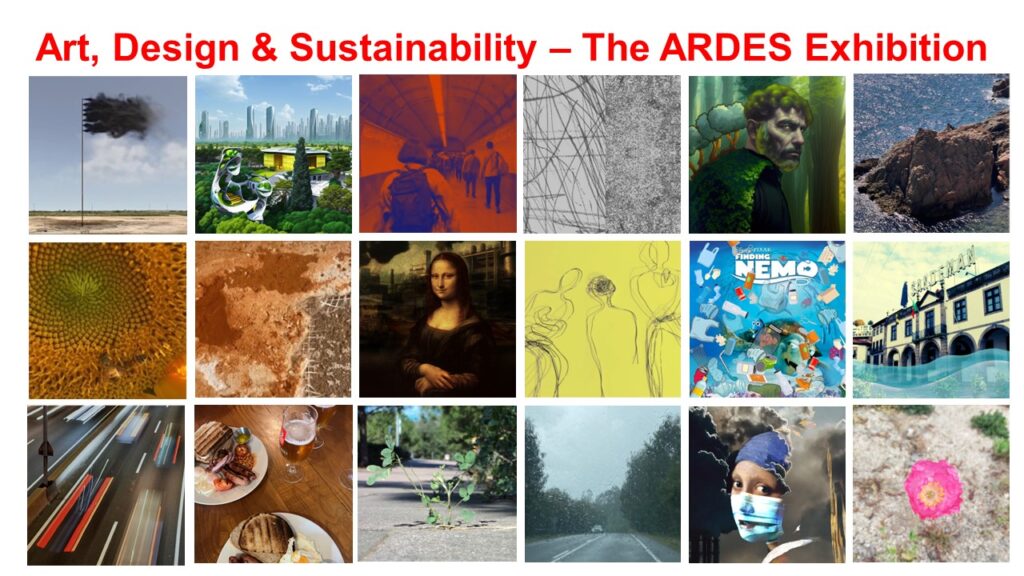
Desplazamiento de los cuerpos
Displacement of bodies
Anna Bosch Miralpeix
Mónica Alonso Martín
Fernando Palma Fanjul
EINA, Centre Universitari de Disseny i Art de Barcelona
Our proposal is situated in the current context of a society saturated with micro-content and the tendency to only inform oneself through headlines, in a superficial manner. It aims to generate a quick but deep impact through empathetic and suggestive messages conveyed through powerful images of degradation contrasted with sounds of endangered birds in an eternal process of migration. It captures the audience’s interest, inviting them to delve deeper into the idea that the work conveys. This approach prompts the audience to turn towards the full text to better understand the thinking behind the proposal and its call to reflection, awareness, and action on sustainability.
https://ardesproject.eu/wp-content/uploads/2024/04/Dezplazamiento-de-los-cuerpos-Anna-Bosch-Monica-Alonso-Fernando-Palma-Fernando-Palma.mp4
Nuestra casa está en peligro, ya no nos protege de la misma manera que solía hacerlo, los signos son reiterados en distintas capas de nuestra sociedad, estas capas se decapan. Buscamos desesperadamente renovarnos, recrearnos, cambiar de piel, reconstruir nuestro hogar.
Tal como nosotros, el resto de las especies y cuerpos naturales y artificiales con los que compartimos el mundo se desvanecen, se degradan. Entre ellas las aves, sinónimo de libertad y eternas buscadoras de las condiciones óptimas para vivir.
De una población de 50.000 millones de aves en el mundo, con 9600 especies, de las cuales 622 viven o se desplazan por España. De estas, en la actualidad hay 242 en régimen de protección especial debido a su peligro de extinción.
En nuestra pieza utilizamos el canto de 15 de estas especies para acompañar imágenes de muros de casas en extinción, muros de arcilla, uno de los materiales más propios, cercano a la tierra y de los más antiguos que el hombre ha trabajado, imágenes que nos llevan a reflexionar el estado actual de degradación del mundo que como sociedad hemos construido, encontrando en esta relación una poética que puede propiciar la reflexión de algunos de los espectadores a nuestro estado actual, la urgencia de actuar, de las políticas que abrazar y la esperanza de mudar o migrar nuestro hogar para así transitar hacia futuros deseables.
Hay cerca de 250 tipos de aves en régimen de protección especial en España. 15 ejemplos:
1 porrón pardo
2 zarapito real
3 fumarel común
4 arao común
5 pico dorsiblanco
6 milano real
7 alcaudón chico
8 escribano palustre
9 focha cornuda o moruna
10 gavilán común
11 ratonero común
12 buitre leonado
13 aguja culinegra
14 combatiente
15 gaviota tridáctila
https://improvisa.es/compositions/new?albumId=699
Our home is in danger, it no longer protects us the same way it used to, the signs are repeated in different layers of our society, and these layers are peeling away. We desperately seek to renew ourselves, to recreate ourselves, to change our skin, to rebuild our homes.
Just like us, the rest of the species and natural and artificial bodies with which we share the world are fading away, degrading. Among them are birds, synonymous with freedom and eternal seekers of optimal living conditions. Out of a population of 50 billion birds worldwide, with 9,600 species, of which 622 live or migrate through Spain. Of these, currently, 242 are under special protection due to their endangered status.
In our piece, we use the song of 15 of these species to accompany images of endangered house walls, walls of clay, one of the most characteristic materials, close to the earth and one of the oldest that humans have worked with. These images lead us to reflect on the current state of degradation of the world that we, as a society, have constructed, finding in this relationship a poetic that can prompt reflection in some viewers about our current state, the urgency to act, the policies to embrace, and the hope to change or migrate our home in order to move towards desirable futures.
There are about 250 types of birds under special protection in Spain. Here are 15 examples:
1. Common pochard
2. Eurasian curlew
3. Common scoter
4. Razorbill
5. White-backed woodpecker
6. Red kite
7. Lesser grey shrike
8. Marsh bunting
9. Horned coot or red-knobbed coot
10. Eurasian sparrowhawk
11. Common buzzard
12. Griffon vulture
13. Black-tailed godwit
14. Ruff
15. Black-legged kittiwake
